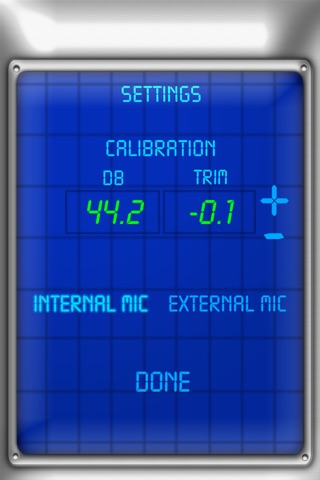
dB Meter app for iPhone and iPad
Developer: Amanda Gates
First release : 10 Jan 2013
App size: 2.88 Mb
dB Volume Meter provides a simple way to measure audio volumes in your environment. The app shows the approximate dB (decibel) level, also known as Sound Pressure Level (SPL). This app is mainly intended for fun, educational purposes, not for professional-level volume measurements, for which you should buy an actual SPL meter from your local electronics store.
This particular dB meter has an old-style digital display which may appeal to some users.
Most people have no idea how loud a 90 dB sound is, or even what threshold they should be avoiding for their own safety. This app gives you an estimation of the environmental sound levels so that you can move to safety when the volume level is too high.
Weve included some useful statistics about the measured volumes, including Average, Peak, Peak Hold, current dB level, maximum, and minimum values. These can all be quickly reset by tapping the "Reset" button, or they can be "frozen" by tapping Start/Stop.
If you wish to use an external microphone, or if you find that the dB reading is a bit off when compared with traditional analog SPL meters, you can calibrate the app using the Settings screen. For example, a hyper-sensitive microphone might give you a dB value that is too high, so youd add a negative Trim value to the dB reading to adjust. Calibration settings ("Trim") are saved internally in the app.
To adjust the calibration, tap the "Configure" button, and then adjust the value based on whether you are using an internal microphone (iPhone users) or an external microphone (iPod Touch users).
Please note that this application requires an external microphone for use with the iPod Touch.
An approximate guide to decibel level safety:
150-160 = Eardrum rupture
140 = Aircraft carrier deck.
130 = Jet take-off (100 meters), gun blast at close range.
120 = Human pain threshold, loud rock concert.
110 = Serious hearing damage if sustained for more than 1 hour.
100 = Serious hearing damage if sustained for more than 8 hours.
90 = Likely hearing damage if sustained for more than 8 hours.
80 = Potential but unlikely hearing damage if sustained for more than 8 hours.
70 = Just annoying, but probably safe.
60 = Typical conversational volume.
50 = A quiet, library conversation.
40 = A whisper.
30 = Barely audible sound.
20 = Threshold of human hearing.

